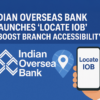GTR recently held its annual GTR Summit in Mumbai. Excerpts from the panel discussions:

Panelists:
Madhur Sharma, Chief Financial Officer, Louis Dreyfus Company India
Deepa Kumar, Head of Asia-Pacific Country Risk, S&P Global Market Intelligence
Hicham El Khaoudy, MD – GTB International, First Ab Dhabi Bank
Aditya Bansal, VP – Finance, KEC International
Sanjay Desai, VP & General Manager, Asia, Supply Technologies (Moderator)
Aditya: India’s exports has increased to $750 bn. The currency fluctuations and volatility has increased quite a lot. There are 2 ways to reduce risk. One is hedging mechanism with banks and other intermediaries. There are many countries from which repatriation is difficult as they don’t have enough dollars. We need help of banks that can tie-up with the central banks of those countries to enable remittances. Also, there is huge volatility in commodity prices. We can hedge base metals, but not things like steel. A lot of innovation happening in SCF. GIFT City banks can give me a limit similar to what I get abroad. TReDS is very good for supply chain finance for SMEs. But there is no similar platform for import and exports for discounting the invoices. A lot of infra spending is happening in Gulf countries and Indian companies are well poised to get opportunities, particularly since competition from China is less. Ease of doing business at GCC has improved a lot. We have set up a procurement hub in Dubai.
Madhur: CPI numbers for March and April are out and in line with RBI. But food and beverage inflation at 7.87% are quite high, due to agri supply chain disruptions. Hedging is very important. We approach RBI in 2017 to allow hedging of commodity prices at overseas markets. They looked into it and brought a policy in 2018. Agri exports from India are falling. PLI scheme of govt is focused on shifting from raw materials to value added products.
Deepa: What excites me is the selection of countries. It is the bilateral agreements that carry more weight as compared to multilateral agreements. The India UAE FTA which went to force in Sept 2022, and since then, our exports have grown 8X. What does India want to trade in? One is trade in services, and India’s own digital infra. Both are path breaking and give us competitive advantage. 44 FTAs are coming up for negotiation, and we have to explore how can UPI extend to other countries? India has to find the sweet spot to balance both manufacturing and services. Traditionally FTAs focus more on goods, and there India becomes a dumping ground. China+1 has always been a good risk reduction strategy. Trade is getting linked to carbon, climate, labor, etc.
Hicham: UAE is the 2nd largest trading partner of India. 25% of India’s remittances comes from India and 40% from UAE+Oman+Saudi. Non-oil trade has grown. Duty exemption for exports from India to UAE. Infra for payment has improved. Also, Indian companies using GCC markets for further access. SIPA has infrastructure for dispute settlement.
Read more:
Panel Discussion: Fintech innovation in India: A market check on trade finance digitization and end-to-end trade solutions









